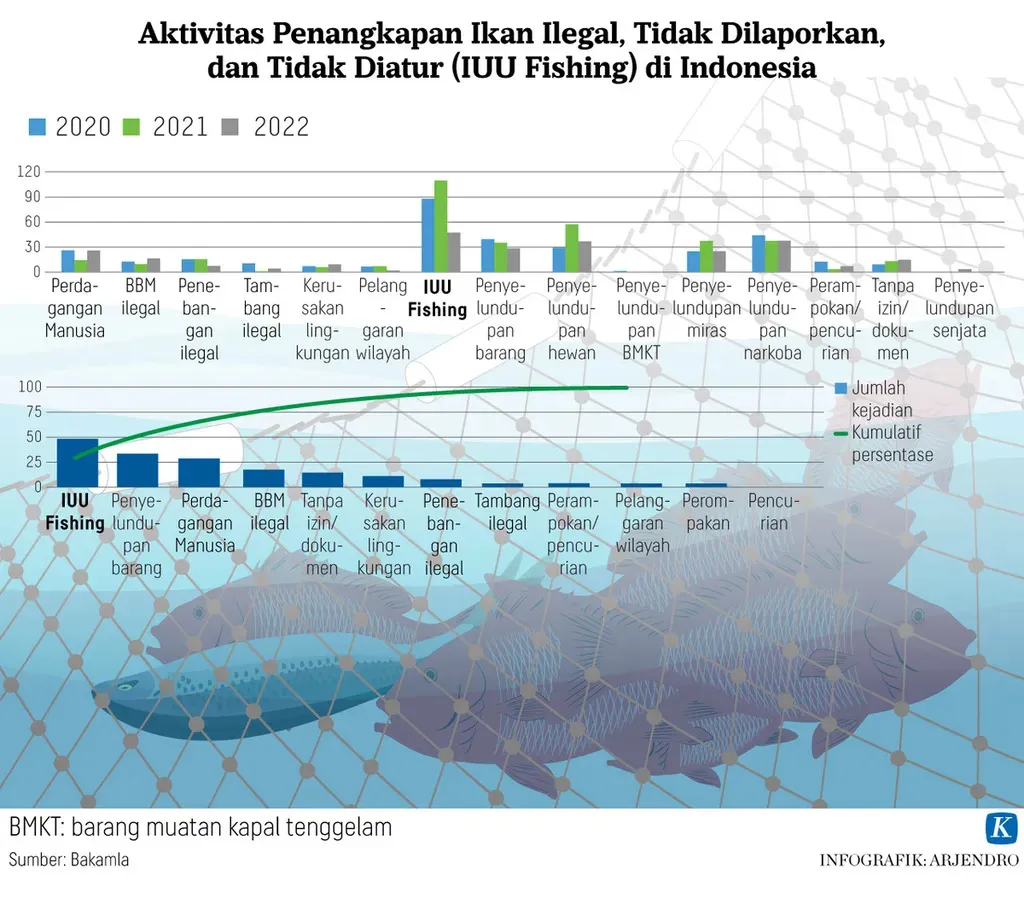Indonesia’s fish production is showing a worrying trend. Output fell from nearly 13.9 million metric tons in 2023 to a projected 12.3 million metric tons by 2028. This represents an average 2% annual decline. Furthermore, historical records paint an even starker picture: since 1965, supply has been shrinking at about 2.5% each year. This Indonesia Fish Production Decline is not just a number. As a maritime nation, this threatens livelihoods, food supply, and the stability of an industry that supports millions.
Indonesia Fish Production Decline: Overfishing and Resource Limits
The main cause is overfishing. Three-quarters of Indonesia’s fish resources are already fully exploited or overfished. Coastal waters, where 96% of fish production comes from small-scale fisheries, are under heavy pressure. These smaller operators often lack the means to switch to more sustainable practices, which deepens the problem.

In 2022, almost half of wild fish stocks were overfished. This makes recovery difficult and lowers future productivity, locking the country into a cycle of declining yields.
Market Pressure from Rising Demand
While production drops, demand keeps rising. By 2028, fish consumption in Indonesia is expected to reach 3.2 million metric tons. The gap between supply and demand could widen, increasing the need for imports or driving up prices domestically.
Fisheries GDP reacts positively to production and exports, but inflation and currency fluctuations weigh it down. For a sector so linked to international trade, these macroeconomic risks are significant.
Read Also: Indonesia Aquaculture Output Rise Fuels New Markets
The Rise of Processed Seafood Thanks to Indonesia Fish Production Decline
Facing unstable wild catch volumes, the industry is adapting. There is now greater focus on processed seafood products for export. This approach aims to create more value per kilogram of fish caught, helping offset volume declines.
The government is supporting this shift through fish processing zones. These facilities aim to improve efficiency, add value, and create new jobs while easing pressure on raw fish stocks.
Small-Scale Fishers in Transition
Small-scale fishers are at the heart of Indonesia’s fisheries. They provide most of the national supply but are also the most vulnerable to production drops. Lower catches mean lower incomes, and without alternative livelihoods or better fishing practices, the cycle continues.
Policies to modernize equipment, train fishers in sustainable methods, and improve coastal management could help slow the decline.
The Road Ahead of Indonesia Fish Production Decline
The projected drop from 13.9 to 12.3 million metric tons by 2028 is a warning. Without decisive action, the Indonesia Fish Production Decline will continue into the next decade. Sustainable fishing, better resource management, and industry adaptation to high-value products are crucial. The balance between supply, demand, and environmental health will define the future of Indonesia’s fishing sector.
FAQs
1. What is causing the Indonesia fish production decline?
Mainly overfishing, resource depletion, and climate pressures.
2. How much is production expected to fall by 2028?
From about 13.9 million to 12.3 million metric tons.
3. Who produces most of Indonesia’s fish?
Small-scale fisheries contribute about 96% of production.
4. How is the industry adapting?
By focusing more on processed seafood for export.
5. Will fish demand keep rising in Indonesia?
Yes. Consumption is projected to reach 3.2 million metric tons by 2028.






